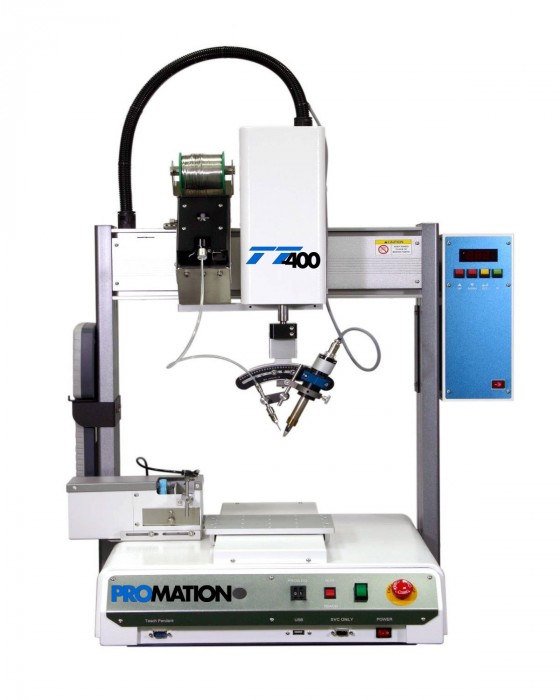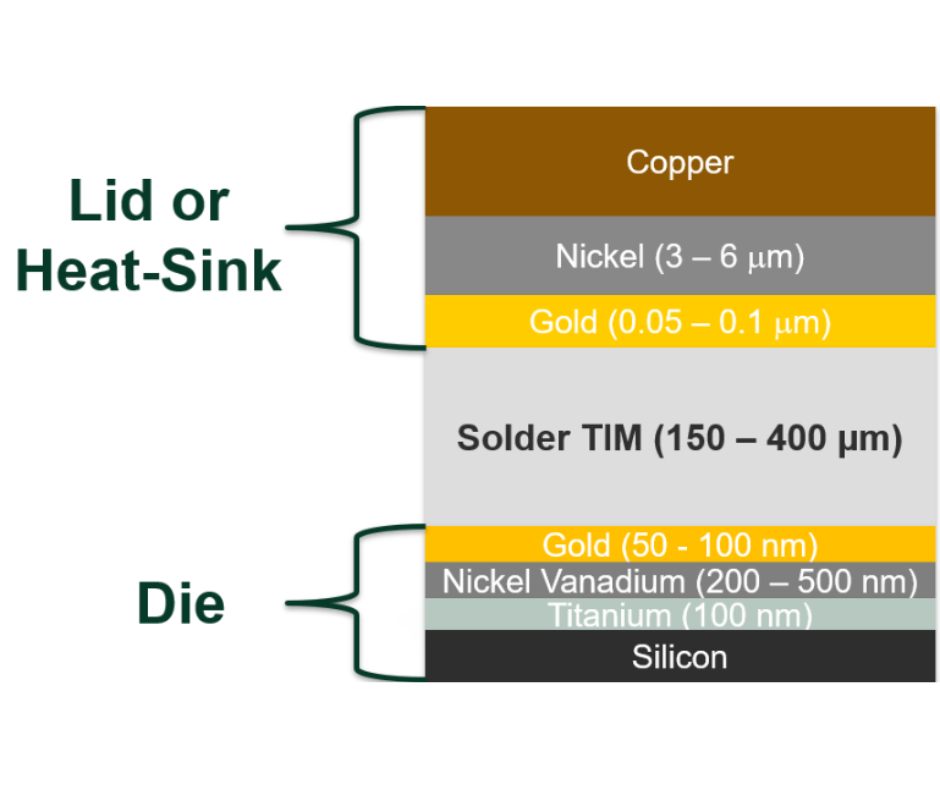Promation Robotic Soldering Unit
Folks,
There is currently considerable interest in robotic soldering, with good reason. Robotic soldering can increase productivity and profitability, but it must be applied sensibly. Consider the following:
When robotic soldering makes sense:
- Job lot sizes are large. There will typically be considerable setup and maybe even programming time required for a new job. So, a low mix, high volume shop will find greater use for robotic soldering.
- No process decisions are required when soldering.
- Where mass soldering techniques (e.g. wave or reflow soldering) are not possible or reliable.
- Heat-sensitive component addition. Robotic soldering adds heat the joint area only and not the entire component.
- Large component addition that would make the mass soldering too difficult or slow. A slow reflow profile is required to create thermal equilibrium over a large and/or diverse board.
- Areas where defects happen frequently with mass soldering techniques or with human hand soldering.
When robotic soldering doesn’t make sense:
- A high mix, low volume shop. This is because setup time will be prohibitive for a high job mix work environment.
- Decisions are required during the soldering process. E.g. say the soldering requires a decision to use a little more heat or solder as the operator watches the joint form. Robots cannot make these types of decisions.
- A mass soldering technique works well. It is tough to beat the speed of a mass soldering technique.
Bottom line: Humans are more flexible and adaptable solderers, robots are more consistent.
Contact versus Non-Contact soldering
Contact soldering using an iron tip is the most common robotic soldering technique. It is the least expensive, but is limited to places the iron tip can go.
Non-contact soldering is typically accomplished with lasers. This technique is usually more expensive, is less common, and it is difficult to vary the energy input with joint size. Its main advantage is that it can often be used for soldering hard to reach places.
Further Thoughts on Robots
There continues to be much hand wringing about robots taking away too many jobs in the future, witness the recent New York Times article “Will Robots take Our Children’s Jobs?” Clearly robots will take away many jobs, just as power looms in the early 1800s or the assembly line of 100 years ago. But so far, throughout history, such technological advances have netted very strong improvements in our standard of living. I expect this trend to continue. Some people will lose their jobs, but with retraining the vast majority of people will be better off. Those displaced will perform new, likely more interesting jobs, such as designing and building robots, selling robots, specifying robot models, purchasing robots, installing robots, programming robots, maintaining robots, creating the need for robots, and many more. This theme is brought in a recent book “What to Do When Machines Do Everything”.
Just how “talented” are today’s and future robots? Not very. They can perform tasks that they are programmed to do with a consistency better than humans. But, they can’t perform many tasks that are simple for humans. Consider the assembly of the “Lego Ninjago Movie Lightning Jet,” that my seven year old grandson, Natey Su assembled, as shown in the photo below. According to Gary Marcus in “Am I Human?” in the March 2017 issue of Scientific American, assembling such a toy would be in the realm of science fiction for today’s robots. In addition, a robot cannot consistently pass a fourth grade science multiple choice test. And this is without questions that have graphs or figures. Adding these wrinkles makes it hopeless.

No robot could assemble this toy that is easily handled by 7 year old Natey Su.
So, a robot with even simple human skills is decades away.
Thanks to the many Indium Corporation colleagues who have developed much of the robotic soldering material.
Stay tuned for Robotic Soldering II.
Cheers,
Dr. Ron



